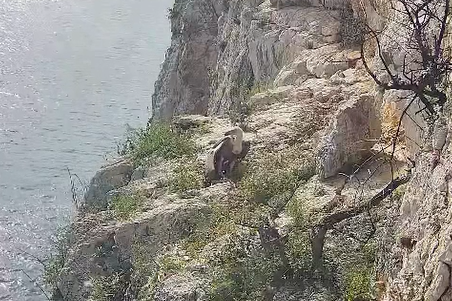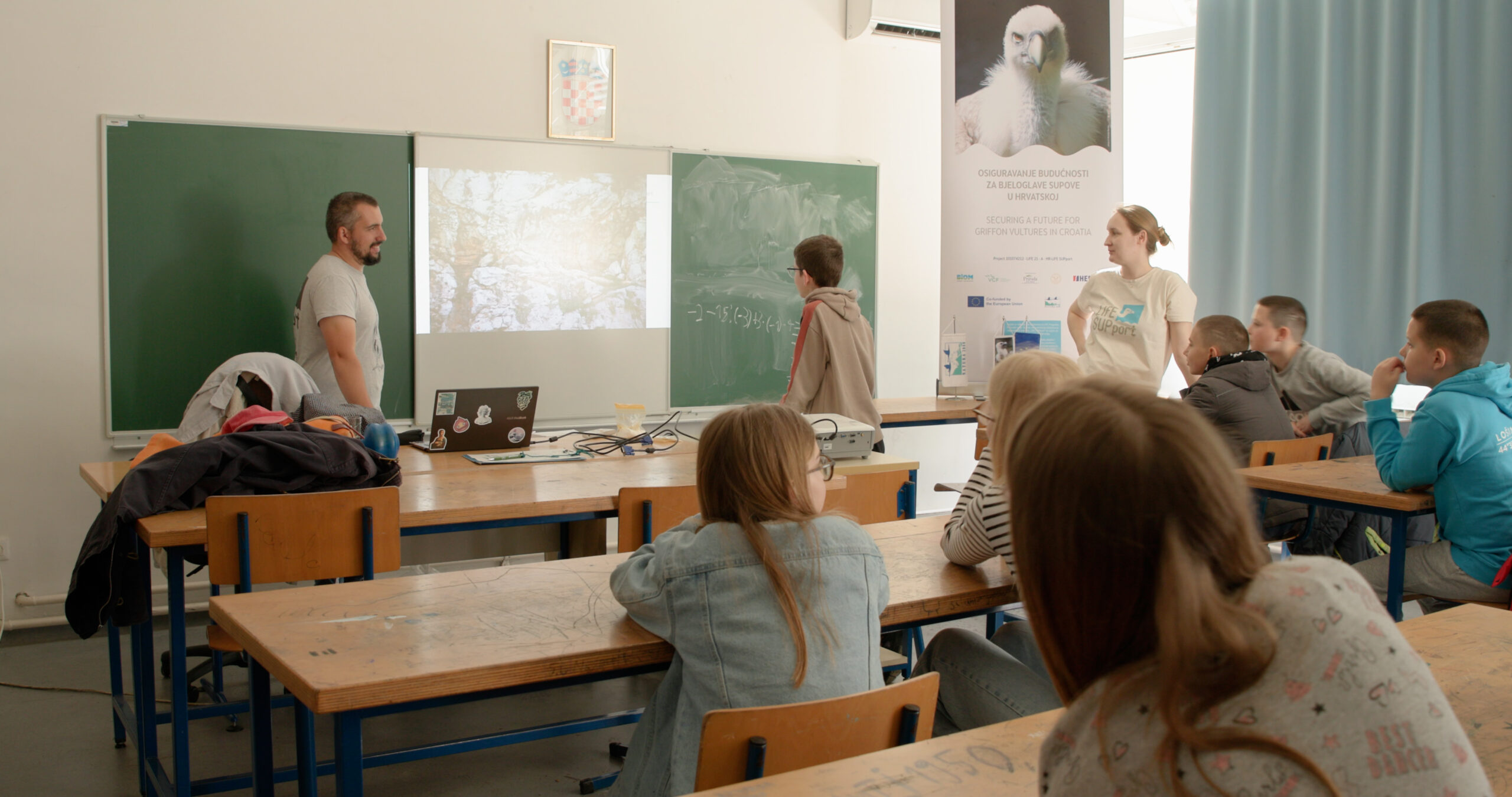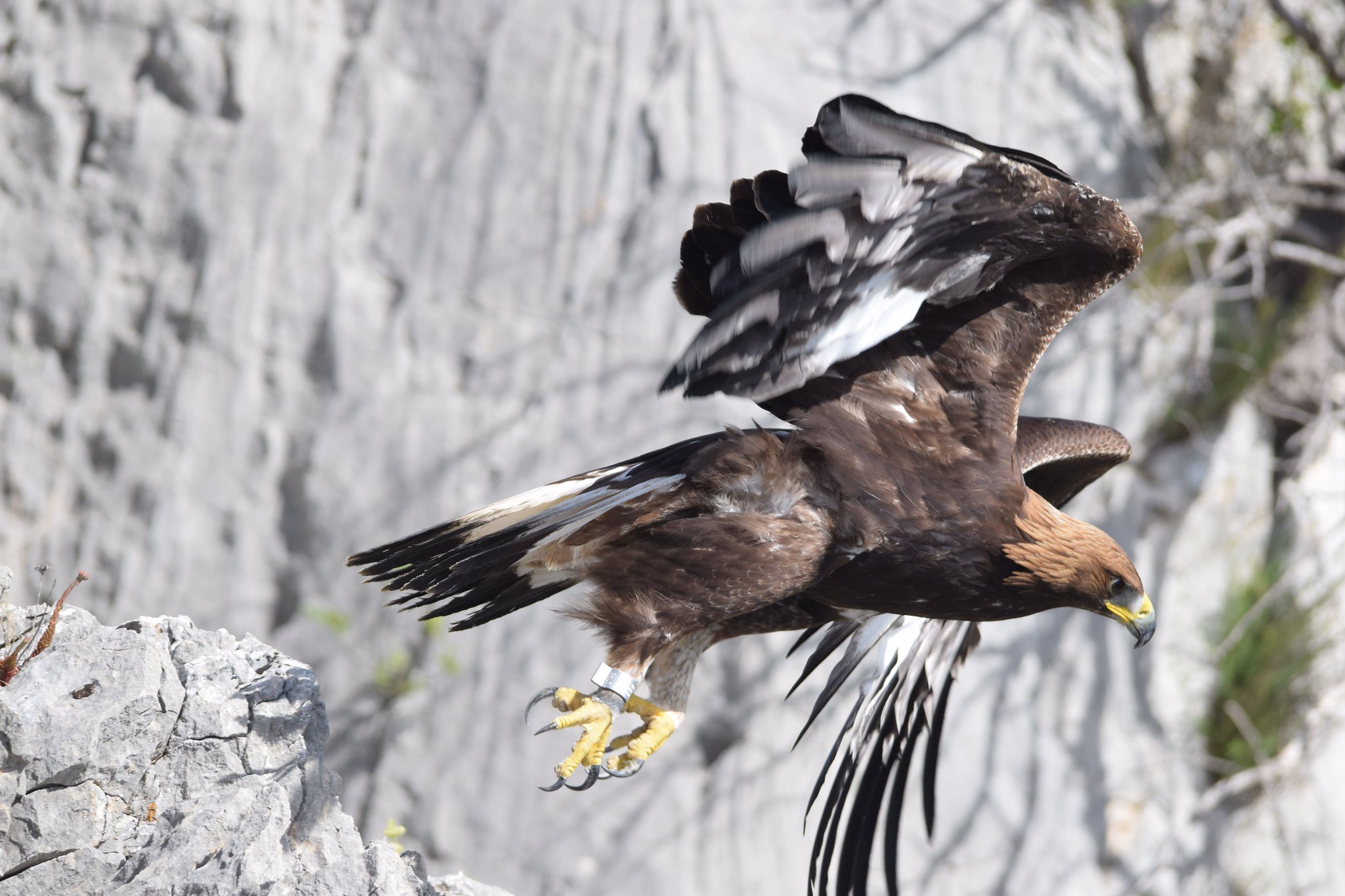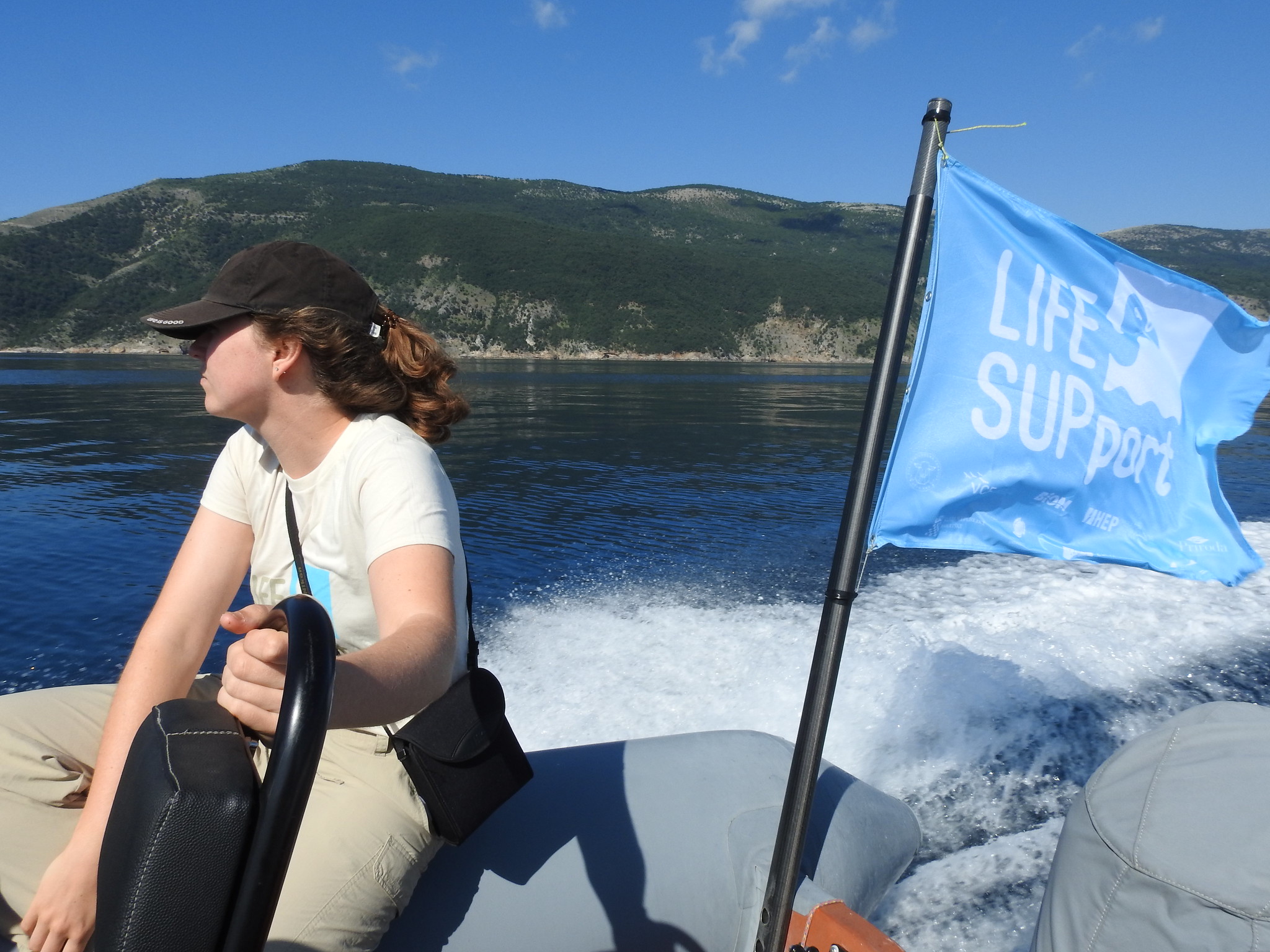
The Griffon vultures of the Kvarner Islands are extremely unique because of their nesting method, but their population is endangered. They nest on sea cliffs, and disturbance due to human activities – such as fishing, boat traffic and tourism – causes individuals to fall out of the nest. Because of this, every year about ten vultures are found either on the rocks or in the sea. The recovery center for Griffon vultures in Beli on the island of Cres works hard to save these birds, but only a few can be rehabilitated and returned to nature.
Each rescued vulture is of crucial importance for the overall population since they reach sexual maturity only at five years of age and lay only one egg per year. With a first-year mortality rate of 75%, rescuing and rehabilitating these birds has a significant positive impact.
This summer, with the help of partners from the LIFE SUPport project and volunteers, the Biom association will educate boat owners, tourists and fishermen on how to behave near vulture colonies during the nesting season. During this period, the birds are most vulnerable because they cannot yet fly. By raising awareness, we want to protect them and ensure they reach maturity.
Join us in our mission to preserve Griffon vultures!
The camera that tracks the development of the young Griffon vulture Grif in the nest on Plavnik island captured many scenes showing the effects of noise on the young vulture. For example, one video captured Grif’s urge to hide from the noise produced by the speedboats. Watch here:
Translated by: Tihana Goričnik






